Items filtered by date: July 2024
Total Contact Casting for Diabetic Foot Ulcers
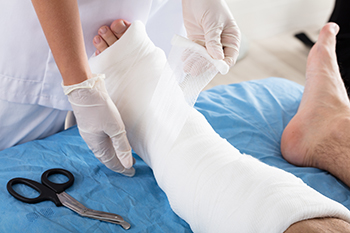
Total contact casting, or TCC, is a specialized technique used by podiatrists to treat diabetic foot ulcers by alleviating pressure on areas susceptible to skin breakdown. This method involves the application of a fiberglass or plaster cast molded to the foot's contours, which allows for even distribution of weight across the entire foot, rather than concentrating it on vulnerable spots. Total contact casting helps protect the ulcer and fosters a healing environment while allowing patients to remain mobile. It is primarily used for diabetic foot ulcers and Charcot foot, with careful monitoring required due to the potential for reduced sensation in diabetic patient's feet. Proper application includes cushioning, protective padding, and ensuring the cast is kept dry to prevent complications. The cast is typically replaced weekly until the ulcer heals sufficiently for normal footwear or orthotics. Consulting a podiatrist ensures appropriate application and monitoring of a total contact cast, preventing further complications. If you have developed diabetic foot ulcers, it is suggested that you schedule an appointment with a podiatrist to see if total contact casting is right for you.
Diabetic foot care is important in preventing foot ailments such as ulcers. If you are suffering from diabetes or have any other concerns about your feet, contact Dr. Richard T. Bauer from Summit Foot & Ankle. Our doctor can provide the care you need to keep you pain-free and on your feet.
Diabetic Foot Care
Diabetes affects millions of people every year. The condition can damage blood vessels in many parts of the body, especially the feet. Because of this, taking care of your feet is essential if you have diabetes, and having a podiatrist help monitor your foot health is highly recommended.
The Importance of Caring for Your Feet
- Routinely inspect your feet for bruises or sores.
- Wear socks that fit your feet comfortably.
- Wear comfortable shoes that provide adequate support.
Patients with diabetes should have their doctor monitor their blood levels, as blood sugar levels play such a huge role in diabetic care. Monitoring these levels on a regular basis is highly advised.
It is always best to inform your healthcare professional of any concerns you may have regarding your feet, especially for diabetic patients. Early treatment and routine foot examinations are keys to maintaining proper health, especially because severe complications can arise if proper treatment is not applied.
If you have any questions please feel free to contact our office located in Latham, NY . We offer the newest diagnostic and treatment technologies for all your foot and ankle needs.
Types and Causes of Foot Deformities
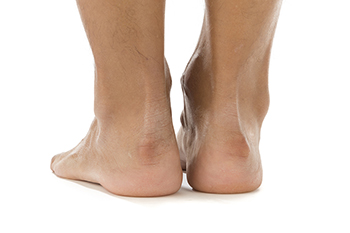 The human foot is a complex structure of bones, joints, muscles, tendons, and ligaments. It carries the body’s weight and enables upright walking, providing stability and flexibility. However, foot deformities can arise from various factors such as external pressures, certain foot postures, or underlying medical conditions. While some deformities are present at birth, others develop over time and can lead to significant discomfort and mobility issues. Splayfoot occurs when the metatarsal bones spread out, which causes the front of the foot to widen and can lead to pain and calluses. Fallen arches, or flat feet, result in the entire sole touching the ground due to weak foot muscles or wearing unsuitable footwear and causing long-term discomfort. Pronated feet, where the heel leans inward, often develop in overweight individuals or those with knock-knees. This may also lead to pain in the knees, hips, and back. High-arched feet place excessive pressure on the ball of the foot, increasing the risk of ankle injuries. If you are experiencing pain resulting from a foot deformity, it is suggested that you schedule an appointment with a podiatrist for an exam, diagnosis, and treatment options.
The human foot is a complex structure of bones, joints, muscles, tendons, and ligaments. It carries the body’s weight and enables upright walking, providing stability and flexibility. However, foot deformities can arise from various factors such as external pressures, certain foot postures, or underlying medical conditions. While some deformities are present at birth, others develop over time and can lead to significant discomfort and mobility issues. Splayfoot occurs when the metatarsal bones spread out, which causes the front of the foot to widen and can lead to pain and calluses. Fallen arches, or flat feet, result in the entire sole touching the ground due to weak foot muscles or wearing unsuitable footwear and causing long-term discomfort. Pronated feet, where the heel leans inward, often develop in overweight individuals or those with knock-knees. This may also lead to pain in the knees, hips, and back. High-arched feet place excessive pressure on the ball of the foot, increasing the risk of ankle injuries. If you are experiencing pain resulting from a foot deformity, it is suggested that you schedule an appointment with a podiatrist for an exam, diagnosis, and treatment options.
If you have any concerns about your feet, contact Dr. Richard T. Bauer from Summit Foot & Ankle. Our doctor can provide the care you need to keep you pain-free and on your feet.
Biomechanics in Podiatry
Podiatric biomechanics is a particular sector of specialty podiatry with licensed practitioners who are trained to diagnose and treat conditions affecting the foot, ankle and lower leg. Biomechanics deals with the forces that act against the body, causing an interference with the biological structures. It focuses on the movement of the ankle, the foot and the forces that interact with them.
A History of Biomechanics
- Biomechanics dates back to the BC era in Egypt where evidence of professional foot care has been recorded.
- In 1974, biomechanics gained a higher profile from the studies of Merton Root, who claimed that by changing or controlling the forces between the ankle and the foot, corrections or conditions could be implemented to gain strength and coordination in the area.
Modern technological improvements are based on past theories and therapeutic processes that provide a better understanding of podiatric concepts for biomechanics. Computers can provide accurate information about the forces and patterns of the feet and lower legs.
Understanding biomechanics of the feet can help improve and eliminate pain, stopping further stress to the foot.
If you have any questions please feel free to contact our office located in Latham, NY . We offer the newest diagnostic and treatment technologies for all your foot and ankle needs.
Are Bunions Affecting Your Everyday Life?
Treatment and Prevention of Common Foot Problems
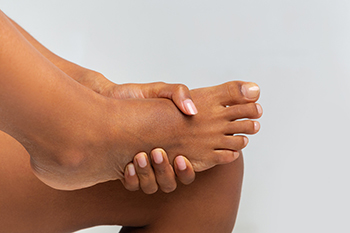
Throughout your life, your feet will carry you thousands of miles, enduring wear and tear that can lead to various common foot problems. Aging feet are prone to widening and arch collapse, which can increase the likelihood of issues like plantar fasciitis, flat feet, and osteoarthritis. Regular self-examinations can help you identify early signs of trouble, such as calluses, blisters, and discolored toenails, which may require changes in footwear or custom orthotics. Plantar fasciitis, marked by heel pain, often benefits from performing specific exercises, and supportive shoe inserts. Flat feet, where your arches have flattened out, can cause discomfort and swelling, best managed with orthotic inserts and shoes with arch support. Additionally, osteoarthritis in your feet can lead to joint pain and stiffness, manageable through topical pain relievers, anti-inflammatory medications, and sometimes corticosteroid injections. Proactive foot care and seeking timely treatment for foot problems are important ways to maintain your mobility and improve quality of life. If you are experiencing persistent foot pain or discomfort, it is suggested that you schedule an appointment with a podiatrist for specialized foot care.
Everyday foot care is very important to prevent infection and other foot ailments. If you need your feet checked, contact Dr. Richard T. Bauer from Summit Foot & Ankle. Our doctor can provide the care you need to keep you pain-free and on your feet.
Everyday Foot Care
Often, people take care of their bodies, face and hair more so than they do for their feet. But the feet are a very important aspect of our bodies, and one that we should pay more attention to. Without our feet, we would not be able to perform most daily tasks.
It is best to check your feet regularly to make sure there are no new bruises or cuts that you may not have noticed before. For dry feet, moisturizer can easily be a remedy and can be applied as often as necessary to the affected areas. Wearing shoes that fit well can also help you maintain good foot health, as well as making it easier to walk and do daily activities without the stress or pain of ill-fitting shoes, high heels, or even flip flops. Wearing clean socks with closed shoes is important to ensure that sweat and bacteria do not accumulate within the shoe. Clean socks help to prevent Athlete’s foot, fungi problems, bad odors, and can absorb sweat.
If you have any questions please feel free to contact our office located in Latham, NY . We offer the newest diagnostic and treatment technologies for all your foot and ankle needs.
How to Tell if You Have Gout
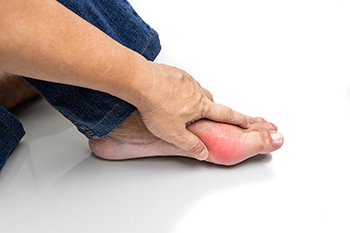
Gout is a type of arthritis characterized by sudden, severe attacks of pain, redness, and tenderness in joints, often the big toe. Recognizing the symptoms of gout can be straightforward when experiencing intense, painful swelling in a single joint that subsides and reappears, sometimes in different joints. However, pinpointing gout can be challenging if symptoms are less typical. A podiatrist can provide a definitive diagnosis through various tests. Lab tests for gout measure uric acid levels in the blood and joint fluid analysis to detect uric acid crystals. Imaging tests like X-rays, ultrasounds, and other types of scans can help rule out other conditions and identify joint damage or uric acid crystal deposits. Post-diagnosis, ongoing monitoring through blood tests ensures that uric acid levels remain controlled, preventing further attacks and complications. These tests, coupled with a podiatrist's expertise and certain pain relief medications, help manage and treat gout effectively. If you are experiencing symptoms of gout, it is suggested that you make an appointment with a podiatrist for an exam, diagnosis, and treatment options.
Gout is a foot condition that requires certain treatment and care. If you are seeking treatment, contact Dr. Richard T. Bauer from Summit Foot & Ankle. Our doctor will treat your foot and ankle needs.
What Is Gout?
Gout is a type of arthritis caused by a buildup of uric acid in the bloodstream. It often develops in the foot, especially the big toe area, although it can manifest in other parts of the body as well. Gout can make walking and standing very painful and is especially common in diabetics and the obese.
People typically get gout because of a poor diet. Genetic predisposition is also a factor. The children of parents who have had gout frequently have a chance of developing it themselves.
Gout can easily be identified by redness and inflammation of the big toe and the surrounding areas of the foot. Other symptoms include extreme fatigue, joint pain, and running high fevers. Sometimes corticosteroid drugs can be prescribed to treat gout, but the best way to combat this disease is to get more exercise and eat a better diet.
If you have any questions please feel free to contact our office located in Latham, NY . We offer the newest diagnostic and treatment technologies for all your foot and ankle needs.
Heel Pain in Your Child
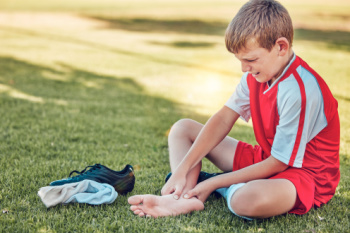
Heel pain in children can be concerning for parents, especially when it interrupts their child's active lifestyle. One common cause of heel pain is Sever's disease, also known as calcaneal apophysitis. Typically affecting children aged eight to 12 during periods of rapid growth, Sever's disease is characterized by pain or tenderness in one or both heels, often worsened by physical activity. Symptoms may include mild swelling surrounding the heel bone and limping, especially after exercise. The underlying cause lies in growth spurts where bones, muscles, and tendons grow and change quickly. This makes the growth plate in the heel more susceptible to injury. The Achilles tendon, in particular, can become tight as the bones in the lower leg grow, adding stress to the heel’s growth plate. Activities like running and jumping, especially when combined with wearing sports shoes with studs, can increase the risk. While Sever's disease does not typically lead to long-term problems, it is important to manage the symptoms to prevent disruption in daily activities. Encouraging rest and avoiding activities that cause pain can help alleviate symptoms. If your child exhibits or complains of heel pain, it is suggested that you schedule an appointment with a podiatrist for an exam and treatment.
Sever's disease often occurs in children and teens. If your child is experiencing foot or ankle pain, see Dr. Richard T. Bauer from Summit Foot & Ankle. Our doctor can treat your child’s foot and ankle needs.
Sever’s Disease
Sever’s disease is also known as calcaneal apophysitis, which is a medical condition that causes heel pain I none or both feet. The disease is known to affect children between the ages of 8 and 14.
Sever’s disease occurs when part of the child’s heel known as the growth plate (calcaneal epiphysis) is attached to the Achilles tendon. This area can suffer injury when the muscles and tendons of the growing foot do not keep pace with bone growth. Therefore, the constant pain which one experiences at the back of the heel will make the child unable to put any weight on the heel. The child is then forced to walk on their toes.
Symptoms
Acute pain – Pain associated with Sever’s disease is usually felt in the heel when the child engages in physical activity such as walking, jumping and or running.
Highly active – Children who are very active are among the most susceptible in experiencing Sever’s disease, because of the stress and tension placed on their feet.
If you have any questions, please feel free to contact our office located in Latham, NY . We offer the newest diagnostic and treatment technologies for all your foot and ankle injuries.

